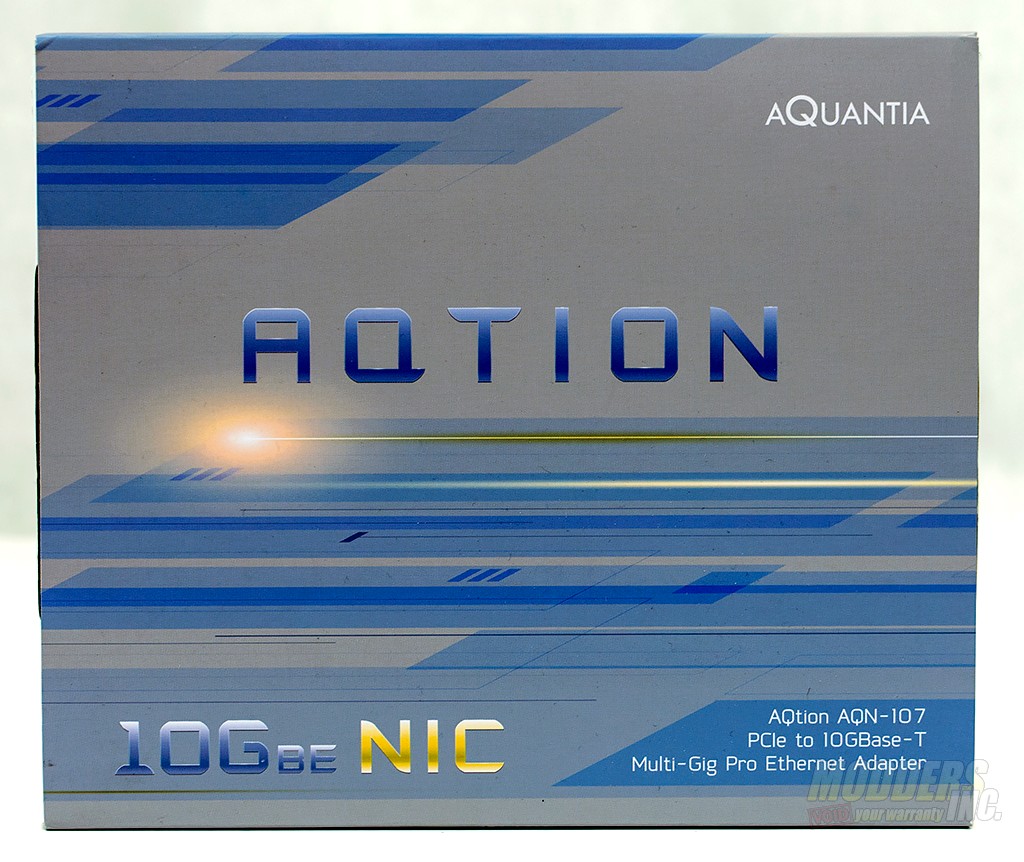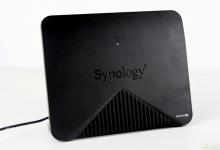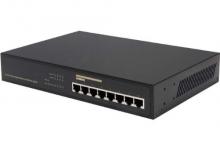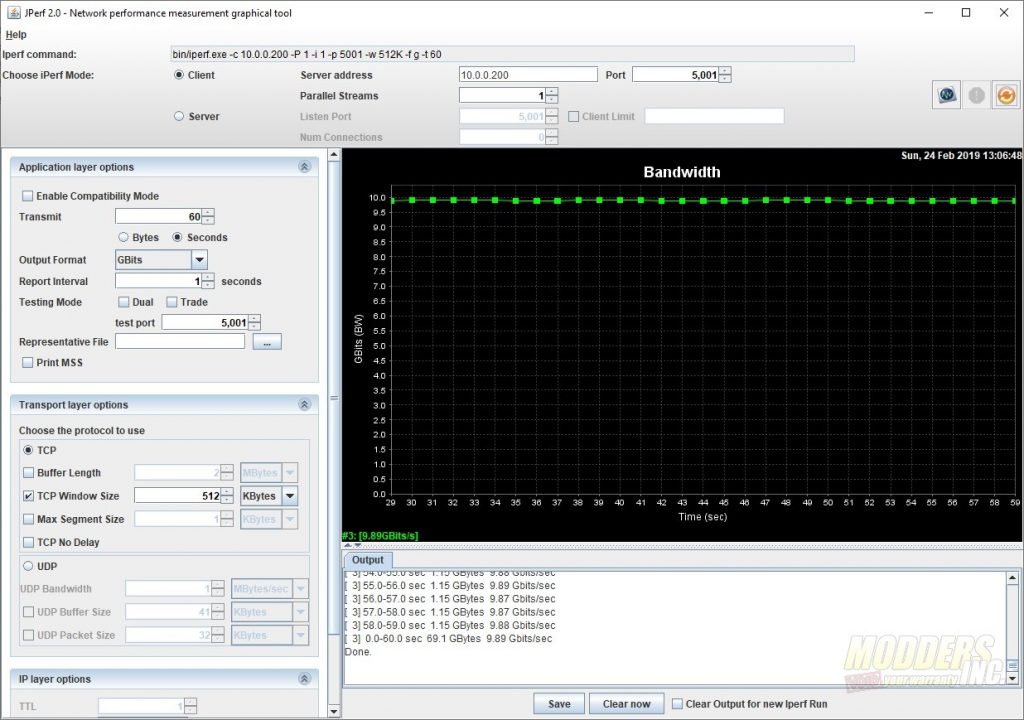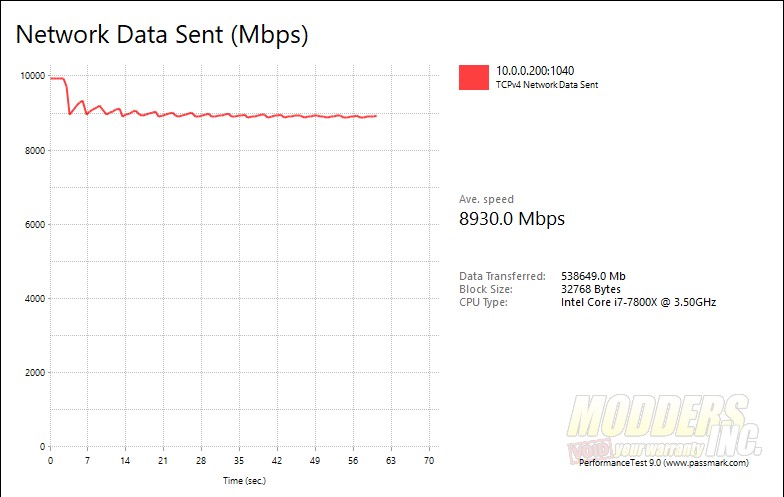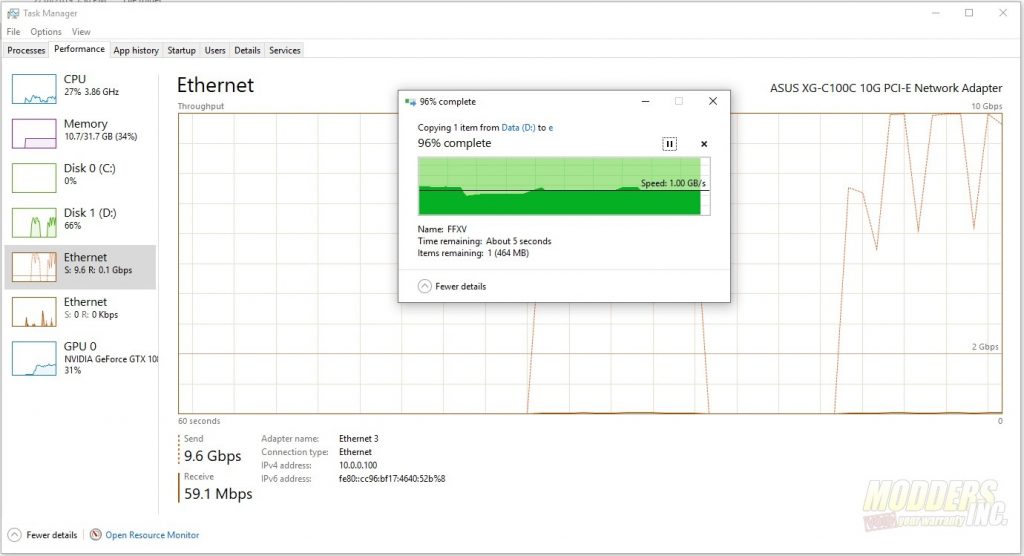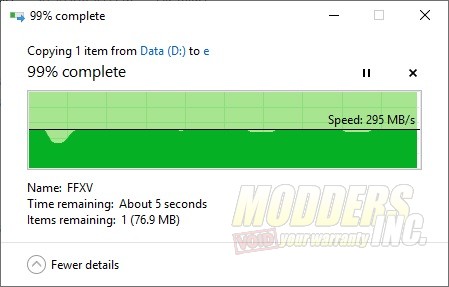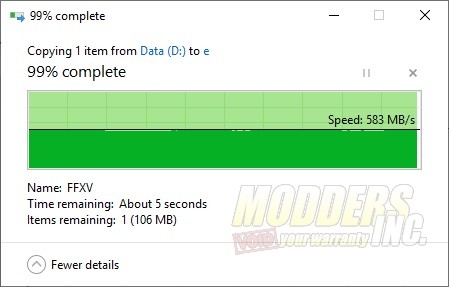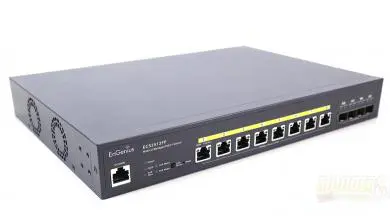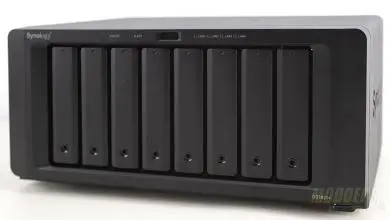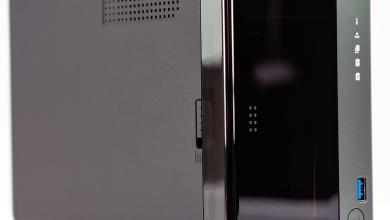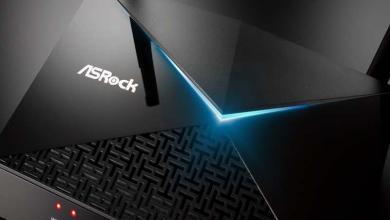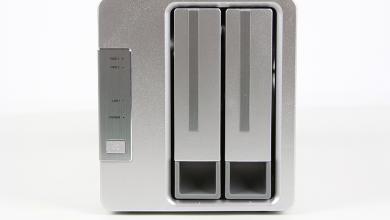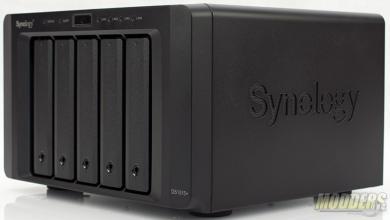QNAP QSW-1208-8C-US 12-Port Unmanaged 10GbE Switch
Affordable 10G and multi-gig networking
System Setup and Testing
Test System #1
| Component |
Product Name | Provided by |
| Processor | Intel Core i7-8700K (Retail) | Intel |
| Motherboard | Aorus Z390 Pro | Gigabyte |
| Memory | G.Skill SniperX 2x8GB @ 3400MHz 16-16-16-36 (XMP) | G.Skill |
| Drive | Kingston HyperX Fury 240 GB SATA SSD (OS Drive), ADATA SX8200 M.2 NVME (Test Drive) | Kingston & ADATA |
| Video Card | Nvidia RTX 2080 Founders Edition | Nvidia |
| Monitor | BenQ EL2870U 28 inch 4K HDR Gaming Monitor 3840×2160 @ 60 Hz | BenQ |
| Case | DimasTech EasyXL | DimasTech |
| Power Supply | Cooler Master Silent Pro M2 1500W | Cooler Master |
| Operating System | Windows 10 x64 Pro with latest patches and updates |
Test System #2
| Component |
Product Name | Provided By |
| Processor | Intel Core i7-7800X (Retail) | Intel |
| Motherboard | Gigabyte x299 Designare EX | Gigabyte |
| Memory | Corsair Vengeance LPX 4x8GB @ 3000MHz 16-18-18-36 (XMP) | Corsair |
| Drive | Kingston A1000 480 GB M.2 NVME (OS Drive), Intel 660p 1 TB M.2 NVME (Test Drive) | Kingston & Intel |
| Video Card | EVGA GeForce GTX 1070 TI SC | EVGA |
| Monitor | BenQ EL2870U 28 inch 4K HDR Gaming Monitor 3840×2160 @ 60 Hz | BenQ |
| Case | Fractal Design Meshify S2 | Fractal Design |
| Power Supply | Corsair RM 850x | Corsair |
| Operating System | Windows 10 x64 Pro with latest patches and updates |
For this review, I used two PCs connected to the QSW-1208-8C-US via two CAT6a cables. For the networking cards on the PC, I chose the Aquantia AQtion 10G Pro for one PC and the Asus version for the other PC. During the 10 gigbit test the cards were left at their default settings in Windows. For the multi-gig testing, I manually set the speed of one of the cards to the appropirate setting (1g, 2.5g, and, 5g).
When it comes to network testing at these speeds, your local storage can be your bottleneck. I chose to use an NMVe M.2 3×4 drive in each PC. Each of the drives is rated for more that 1500 MB/s read speeds and 1200 MB/s+ write speeds. For parity, I also created a RAM drive on each of the PCs to ensure that testing with my chosen local storage option was not skewing the testing results.
To start off, I loaded up JPerf. JPerf is a Java-based test for IPERF. This application tests network bandwidth between two hosts. I set PC #1 as the host and PC #2 as the client. I did up the TCP window size in JPerf in order to test a single stream.
The test was run for 60 seconds. During that time frame, the application transferred 69.1 Gigabytes at an average of 9.89 GB/s.
For the next test, I fired up Performance Test 9.0 and used the network benchmark. Again, I set PC #1 as the host and PC #2 as the client.
By default, the test runs for 60 seconds. Though Performance Test’s network benchmark, an average of 8930.0 Mbps or 8.93 Gbps.
The final test I performed a file copy from PC #2 to PC #1. I have a test file that I created and zipped (uncompressed) containing multiple large files for a total of 12 GB in size.
In the Windows copy test, we were able to send and receive data at 9.6 Gbps which equates to 1 Gigabyte per second.
Since the QSW-1208-8C supports multi-gig, I ran a quick copy test from PC 1 to PC 2. I set the network card speed in the card settings and manually set it to 1, 2.5 and, 5 Gigabit per second.
At 1 Gigabit per second, I was able to copy a 12 gigabyte file at 118 megabytes per second. At 2.5 G, the copy speed came in at about 298 megabytes per second, and finally at 5 G, 583 megabytes per second was attained.
